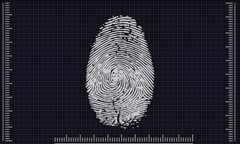If you work in IT, you’ve likely heard of multi-factor authentication. However, you might not have realized how much of a technological advancement it is and what it can allow you to do.
We’ll discuss that in the following article. Multi-factor authentication is vital for businesses, and any companies who are not using it yet are falling behind.
What is MFA?
Multi-factor authentication, or MFA, to use the shorthand, is a kind of electronic authentication method. The user gets access to an app or website, but only after verifying who they are using two or more methods.
This is part of the authentication process, which you can divide into three distinct categories. They are inherence, possession, and knowledge. Making a person identify themselves by using two of the three, or all three, means your security is so much stronger than if you chose not to use this methodology.
If you work in IT, it’s not so easy sometimes getting a client to use multi-factor authentication. The reason is usually that it’s a little more time-consuming than if you don’t have and use it. The client might need an authentication app. They may also want to have a single password that’s easy to remember instead of having to provide multiple identifiers.
You can often convince a customer to install this system, though, when you tell them some horror stories about hackers getting into systems and wreaking havoc. It happens often enough these days that these tales are not farfetched.
Now you know a little about MFA. But why does is it so much better technology than what used to exist?
Why MFA is Better Than Previous Login and Authentication Systems
In the past, single-factor authentication was permissible. In fact, it was the norm. A single password was all it took for someone to get into a software suite a company used to do all of its work. There was no follow-up question or additional measure to verify identity.
There was no added security layer, and that’s the real difference between single and multi-factor verification. With single, all you probably have is a password. That’s relatively easy to steal and use. A single time a hacker can get past your defenses this way, they can scramble your software, steal trade secrets, crash your network, etc.
MFA means a cybercriminal would have to do a lot more to access the network. They would need to steal your password, for instance, but also get their hands on your smartphone. The likelihood of both these things happening is not very high.
Phishing Protection
Phishing protection is another aspect when you go with multi-factor authentication over single. Phishing attacks happen at companies all the time, and sometimes workers fall for them. Some hackers or other entities send over emails with attachments that look very official, enough to convince an otherwise diligent employee.
Once a phishing attack works, the hacker can often steal login information and passwords. Even if they do, though, MFA usually stops them from getting any further when they try to use those to get inside your network.
Even if someone has an employee’s user name and password, they still need one or even two other factors to convince the software suite to let them in. Having that additional security wrinkle in place often deters hackers and convinces them to try penetrating a less robust security network.
This Technology Didn’t Always Exist
The reality is that this tech did not always exist, and only now, when it’s widely available, can you stop most hacker attacks if you implement it. If you have a system that supports MFA, any knowledgeable IT person will tell you to use it. Even a relatively rudimentary MFA system, like SMS-based one-time passwords, is better to have than single-factor.
The good news is that almost no software suites exist now that don’t allow you to easily implement the MFA system. Once you’ve set it up, it might take your workers a little longer to sign in, but the chances that a hacker gets inside your perimeter are not very high.
Any time you can take steps to stop hacker attacks, you should do so. Every successful attack means your employees and customers will trust you less. They won’t want to work for you or buy from you if they know you ignore the most modern technology.
That’s why you need to look into MFA for your business entity if you’re not using it yet.

